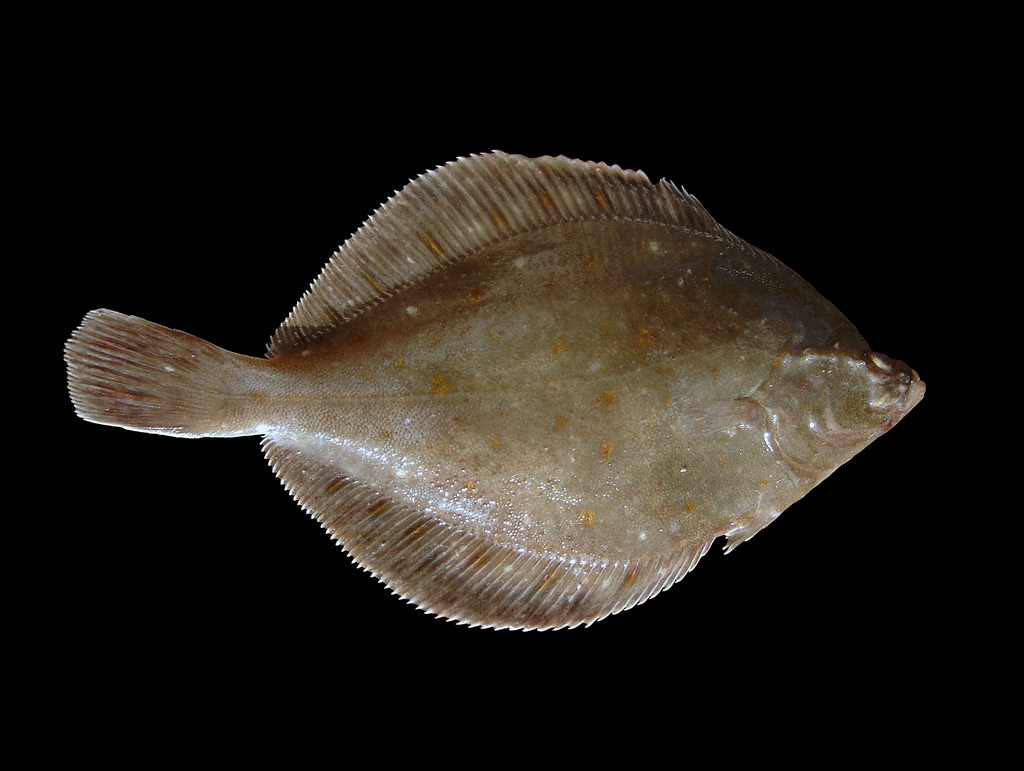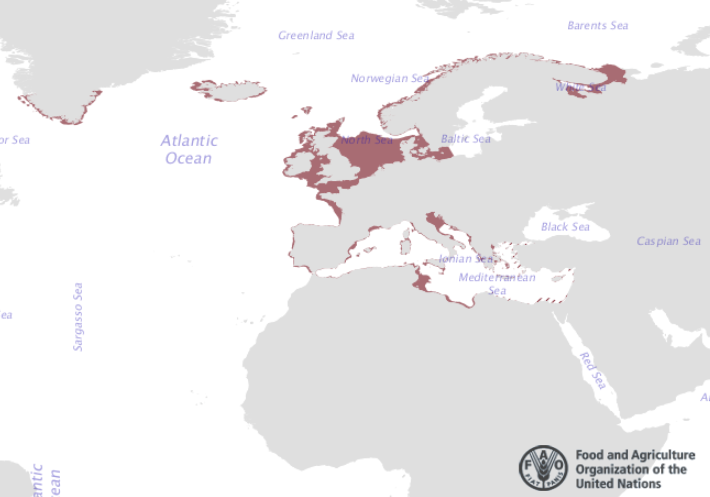Plaice

© Hans Hillewaert / , via Wikimedia Commons
Scientific name: Pleuronectes platessa
Also known as: European plaice
MCRS: NWSFC District MCRS: 270mm. EU MCRS: 220mm
Description
Plaice is a typical right eyed flat fish (if the fish were to swim upright, both eyes would be on the right side of the body). It is oval shaped and typically brown in colour with conspicuous orange or red spots; however plaice can vary considerably in colouration depending on the substrate they live on. They have 4-7 bony knobs which run between the eyes to the gill opening. They grow to around 50-60 cm in length but have been recorded up to 90 cm.
Habitat and Distribution
Plaice are most commonly found on sandy bottoms but can live on gravel or mud. They are active at night and remain stationary during the day, usually buried within the sediment leaving only the eyes protruding. They have been recorded from 0-200 m depth, but are mostly between 10-50m and within a temperature range of 2-15°C.

©FAO (Source Accessed 06/04/2018)
The species is commonly found around all coasts of Britain and Ireland. Their distribution ranges from the western Mediterranean, throughout the North Sea and into the White Sea (including coasts of Iceland).
Life Cycle, Reproduction and Feeding
Plaice feed on other animals on the sea bed including shellfish such as cockles and razor clam, crustaceans, worms, brittle stars and sand eels. Plaice have ‘cutting’ teeth which they use to bite off soft, protruding parts of bivalves, such as siphons; further back in the mouth they have crushing teeth for harder parts such as shells.
The usual spawning period is between January and March when the water temperature reaches around 6°C. Females can produce up to half a million eggs which are laid in shallow water, between 20-40 m, in well-defined spawning grounds. The eastern Irish Sea is important ground for spawning plaice. Larvae are planktonic and remain in the water column for all larval stages. At approximately 40 days old they undergo an amazing transformation that all flatfish species go through – whereby one eye migrates round to the same side of the head as the other. In plaice the left eye shifts around and as the individual settles on to the seafloor it metamorphoses into the traditional flatfish form.
In their first year young fish live in very shallow water and can often be found in sandy tide pools. In their second year they start to move into deeper water as they reach around 15 cm in length.
In the NWIFCA District
Plaice are commercially fished using demersal trawls, beam trawls and nets and are highly valued as food fish. Commercial fishing pressure on plaice has reduced since the 1960s and 70s when it was heavily targeted in UK waters and they are now species of Least Concern on the International Union for the Conservation of Nature (IUCN) list. Plaice are commonly caught by shore anglers from March-September as warmer sea temperatures bring them closer to shore; they then move further offshore in the colder months.
Fisheries Management
Within the District there is a suite of netting Byelaws which vary across the District. There are also restrictions on mesh size of nets and features of trawls. Read more about this here.
Where commercial trawling and netting occurs in Marine Protected Areas it undergoes an assessment to ensure the activity does not cause risk to conservation features. HRAs carried out for trawling and netting in the District’s European Marine Sites can be found here.
There are also national and international measures that apply to this fishery, a precautionary total allowable catch (TAC) has been set for the species. TACs are divided up at an international level in the form of quotas, and boats that are eligible are given a proportion of this quota and can fish for the species. Once the available quota has been fished the fishery is closed. To read more about this click here.